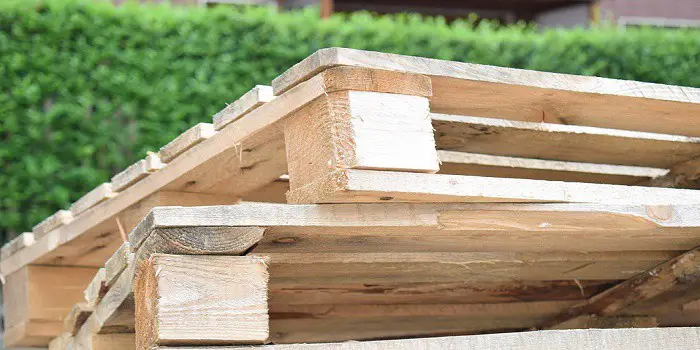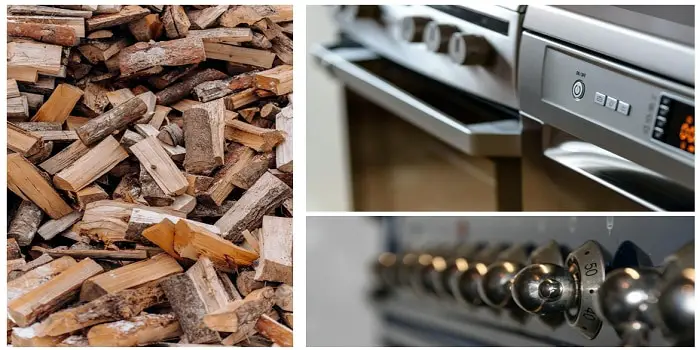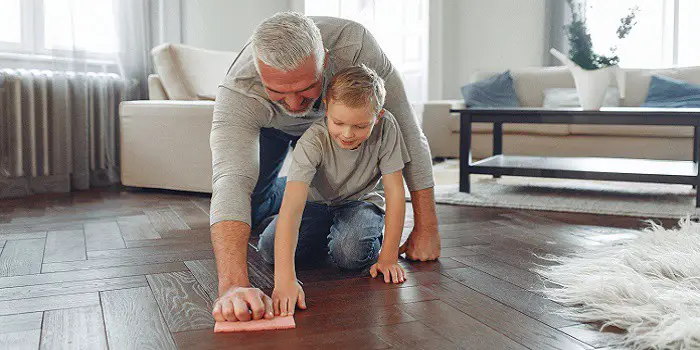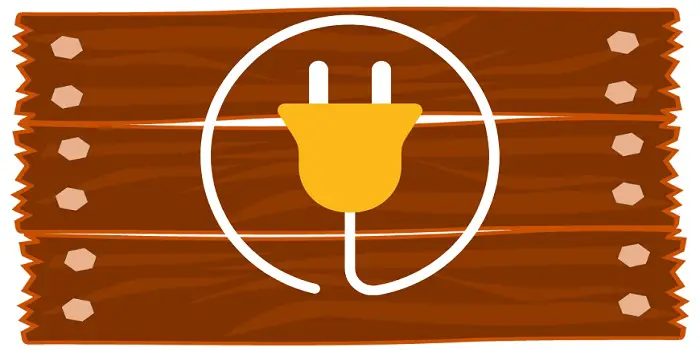
It’s the type of question that does not get asked very often, does wood either conduct or insulate against electricity?
But it is an important question because there is considerable misinformation about whether wood can actually conduct electricity or not.
With some saying that it can conduct and others saying that wood insulates, what is the actual answer?
While wood is an insulator and does not conduct electricity, that depends on whether there is moisture present in it or not. So, in simple terms, dry wood acts as an insulator but when it’s wet it conducts some electricity.
This is true of many different materials in which conductivity is determined by the amount of moisture present.
You may have noticed that telephone poles made from wood occasionally get struck by lighting which indicates that they conduct electricity, but this usually occurs to the wood being wet from the rain.
A word of advice, stay away from any tall structures, telephone poles, and the like, to be safe when lightning is occurring.
Can Electricity Travel Through Wood?
When dry, wood is a pretty decent insulator against electricity. This is because wood itself is a non-conductive material. But when the wood becomes wet it can conduct electricity.
The one exception to the insulation rule is when wood comes into contact with a high voltage such as electrical lines.
The amount of electricity is such that some of it can pass through the wood. This is a word of warning about using your wooden ladders on electrical lines as you can receive a serious shock.
How to Prevent Wood Electrical Shock?
If you are working with wood and using electrical devices such as power tools, then you should wear anti-electrical gloves when practical.
This will protect you against shocks that may occur from the power tools themselves if the insulation fails.
You can increase the protection by keeping the wood dry so that it cannot conduct the relatively small amount of electricity present in the powered devices.
Remember that water is your biggest enemy, so keep it well away from the work area.
In addition, you can install Ground Fault Circuit Interrupters (GFCI) which will prevent electrical shocks and lower the risk of fires. Plus, keep the kids and pets out of the work area when you are using your power tools.
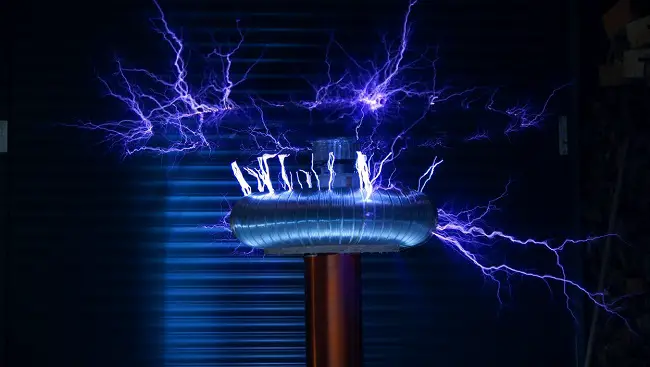
Understanding the Science Behind Conductivity
The ability of electricity to flow through materials depends on how easily the electrons will pass through different substances.
Protons and neutrons are not able to move from one place to another like electrons. This is because electrons orbit the protons and neutrons much like the Earth orbits the sun. It’s tough to knock protons out of position, but the electrons can be pried from their orbits.
Metals are good conductors of electricity because they can gain or lose electrons rapidly.
The opposite is true of organic materials such as animals, people, plants, and wood since it is tougher to knock the electrons out of place.
The molecules are bonded with hydrogen which keeps them stable and compact, thus organic materials tend to be insulators because the electrons are far tougher to dislodge.
But the differences between conductive and insulating materials are not so black and white.
There are many insulating materials such as wood that will conduct electricity if enough energy is present.
So, the electricity present in your power tools is generally not enough to conduct through wood, but a high-voltage line may carry enough juice to do the job.
Pure ceramics are excellent insulators. But when they are infused with certain substances, they can become excellent conductors of electricity.
Pure water insulates electricity quite well, but less so when it is polluted by other substances such as dirt or salt, it becomes more conductive.
Some common conductors include the following.
- Gold, Silver, Copper, Aluminum, Iron, and Steel
- Brass, Bronze, Platinum, and Mercury
- Water, Graphite, Lemon Juice, and Concrete
However, there are materials that act as excellent insulators. You might see such materials wrapping power tools and equipment.
- Rubber, Glass, Diamonds, and Plastic
- Asphalt, Oil, Air, Dry Wood, and Dry Cotton
There are other materials that can insulate as well, such as dry paper, ceramics, quartz, porcelain, and fiberglass. Such substances make it difficult to separate the electrons which is why they are good insulators.
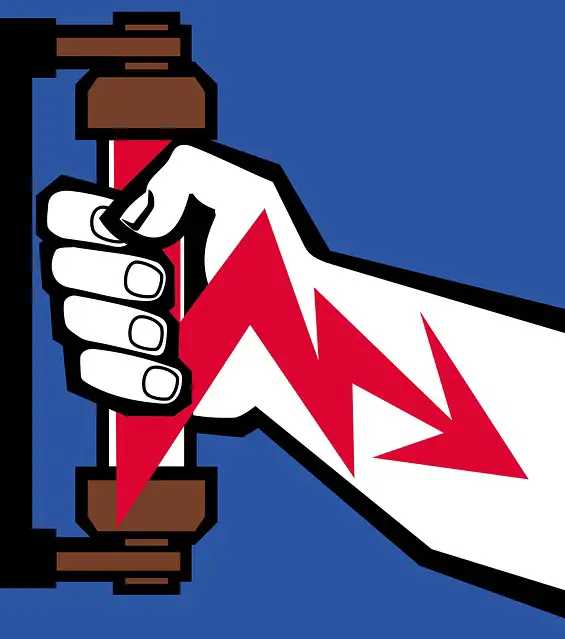
What are the Factors that Affect the Conductivity?
There are several factors that affect how a material conducts electricity.
Generally speaking, the thicker the material, the more electricity it may conduct compared to a thin section.
In addition, shorter pieces conduct more electricity than longer pieces. This is due to the reduced resistance in the shorter piece compared to the longer one.
Temperature variations will also affect conductivity. For some materials, the hotter it gets, the more electricity it will conduct. For other materials, the opposite is true. This is why certain superconductive materials work best in cold temperatures.
Materials that easily conduct electricity will generally not heat up, at least compared to insulating materials in which the friction of the electrons is causing heat to be generated.
Finally, if there are special finishes (like high gloss varnishes) or decorations (with special materials like platinum, silver, or gold) present on the wood, it can also make the wooden piece a conductor for sure.
You should especially be cautious at times when the voltage (or current frequency) is too high.
Can You Burn Wood with Electricity to Make Patterns?
Adding designs to wood that look unique and as if Zeus has struck the wood with his lightning are often unique and great talking points with your guests or just a fun hobby to get into.
The process of burning wood with electricity can be done through fractal woodburning.
Using this method, you take high-voltage electricity to burn the wood; and doing this creates Lichtenberg patterns.
A warning though, you are working with high-voltage electricity, which can seriously injure you, leave permanent burn scars on you, and even kill you.
Although some online blogs suggest you make your own fractal wood-burning device from microwaves or other devices, this would not be recommended for most people.
If you are passionate about learning and want to try the process, you can buy all components required for fractal woodburning online, including the high-voltage device.
When you buy it online, you don’t need to worry about if you did everything correctly before using it for the first time.
For burning wood with electricity, here are the steps you can follow…
Step 1 – Safety First
Even though you purchased everything online and didn’t make your fractal wood burner out of a microwave, you still need to put safety first when working with high-voltage electricity.
Get dressed for safety:
- Welding gloves – These will protect your hands and be the first line of defense from burns.
- Insulated shoes – Any boots or shoes made from rubber will ground you and stop you from being electrocuted.
- Face mask – You’ll be making smoke from whatever burn you’re burning, so a face mask is just a nice-to-have option, so you don’t inhale the smoke.
Step 2 – Set Up Your Work Area
Get everything prepared that you’ll need so you don’t get distracted.
Make sure your fractal wood burner is laid out on the table, plugged in, and ready to go. Make sure any wood you want to use is on the table or close to the table. Also, ensure any solutions that we’ll discuss in later steps are prepared and on the table.
Step 3 – Select Your Wood
Many different types of wood can be used, and you can try them all to see which works best for you and which you prefer the look of.
For example, you may want to start with lighter wood so that the burns and designs show up better.
It’s essential that you select a flat piece of wood that will not move or roll around, and you’re working on it.
Instead of getting random pieces of wood, you may want to go to a hardware store and pick up some good pieces of fine-grain fiberboard or plywood. You can still select different types and shades but get a better piece of wood for hanging or using for gifts.
Step 4 – Create the Solution
You’re not just manually burning wood with electricity, you need a conductive solution to help create the designs.
Mix 2 tbsp of baking soda into 1 liter of water in a plastic container.
Use a paintbrush or foam pad to spread a thin layer of the solution over your wood board in the area where you want to create a design. Don’t saturate the wood.
Step 5 – Create the Design
You’re not so much creating the design but putting the components together to see what design you’re going to get.
Warning: Don’t let your probes touch, or you’ll get shocked.
Place the two probes from your fractal burning device on different parts of the board. They should be touching the solution you applied.
You can place them close together for a smaller design in the middle, or you can place them on the far ends of the board for a larger design. For the larger designs, you’ll need a little longer for the probes to burn the wood.
You should have a safety pedal or something else that you can press to now release the electricity.
Keep the electricity flowing until you are happy with the size and darkness of the burns, as well as how far they’ve traveled around the wood.
PRO-TIP: If you’re not getting good burns, then your wood may be too wet. Use less water or dry some of it off with a cloth.
Step 6 – Clean Up
Once you’ve got the design you want and have disabled the electricity, put the probes away and unplug the fractal-burning device.
You can put the wood under running water and clean it off with a soft-bristled brush.
To finish the project, use fine-grain sandpaper to run over the surface.
Final thoughts
If you have dry wood, you have a pretty good insulator. It will prevent the flow of electricity from common powered devices in the home.
It is important to keep water away from the wood or if the wood is freshly chopped there may be enough moisture still inside to conduct some electricity. This will however depend on how thick or thin the wood is along with its length.

Hi, I am Mark Garner a professional carpenter, woodworker, and DIY painter. I live in the small city of Peoria, Arizona as a semi-retired woodworker. I have started this blog with a simple motive to help you with my wood experience in this sector. If you like to know more about what I love doing and how it all got started, you can check more about me here.

